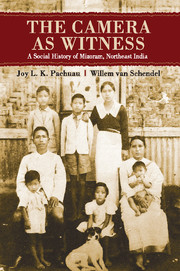Book contents
- Frontmatter
- Contents
- List of Figures
- List of Maps
- Acknowledgements
- I Becoming Mizo
- II Mizoram in the New India
- 11 The Long Goodbye
- 12 The Emergence of Popular Politics
- 13 Mizoram and the New Indian Order
- 14 Mizoram Comes to Delhi
- 15 The Search for Authenticity at Home
- 16 Mizo Style: Cowboys at Heart
- III Visions of Independence
- IV Mizo Modernities
- Copyrights and Sources
- Glossary
- Bibliography
- Index
11 - The Long Goodbye
from II - Mizoram in the New India
Published online by Cambridge University Press: 05 May 2015
- Frontmatter
- Contents
- List of Figures
- List of Maps
- Acknowledgements
- I Becoming Mizo
- II Mizoram in the New India
- 11 The Long Goodbye
- 12 The Emergence of Popular Politics
- 13 Mizoram and the New Indian Order
- 14 Mizoram Comes to Delhi
- 15 The Search for Authenticity at Home
- 16 Mizo Style: Cowboys at Heart
- III Visions of Independence
- IV Mizo Modernities
- Copyrights and Sources
- Glossary
- Bibliography
- Index
Summary
The end of colonial rule in India is often portrayed as a sudden changing of the guard: the British departed and indigenous administrators took over. Whatever the accuracy of this representation for other parts of India, Mizoram's trajectory certainly presents a corrective. Here the transformation from colonial to post-colonial showed a different dynamic – it was gradual. Mizoram did not hurtle into independence; it segued into it. The visual record helps us analyse this process.
Staying on
The colony of British India met its demise when the British government handed over power to three new governments in 1947–1948. The British transferred power to the new governments of India and Pakistan on 14–15 August 1947 and to the new government of Burma on 4 January 1948. Previously, in 1937, they had formally split British India into a smaller colony of ‘British India’ (now divided between Pakistan and India) and the new colony of ‘British Burma’.
Henceforth the mountain range inhabited by the Mizos and other Zo-fate (groups belonging to the Zo family) would be ruled by these three different national governments – Burma, India and Pakistan. The portion under Pakistani rule was known as the Chittagong Hill Tracts district, and the portion under Burmese rule as the Chin State and parts of Rakhine state. Mizoram (then known as the Lushai Hills) became part of independent India and so did other areas where Zo family groups lived, notably the Churachandpur region of Manipur, the Haflong region of Assam and the Jampui region of Tripura.
In most parts of India, indigenous administrators immediately took over from the departing British. Only a few British civil servants were allowed, or willing, to remain in their posts. The others left around the time of Independence: ‘The evidence suggests that many would have been willing to stay but decided at the last minute to opt out … The principal reason why they did not stay in India is that political support from the Congress was lacking’.
- Type
- Chapter
- Information
- The Camera as WitnessA Social History of Mizoram, Northeast India, pp. 233 - 244Publisher: Cambridge University PressPrint publication year: 2015

